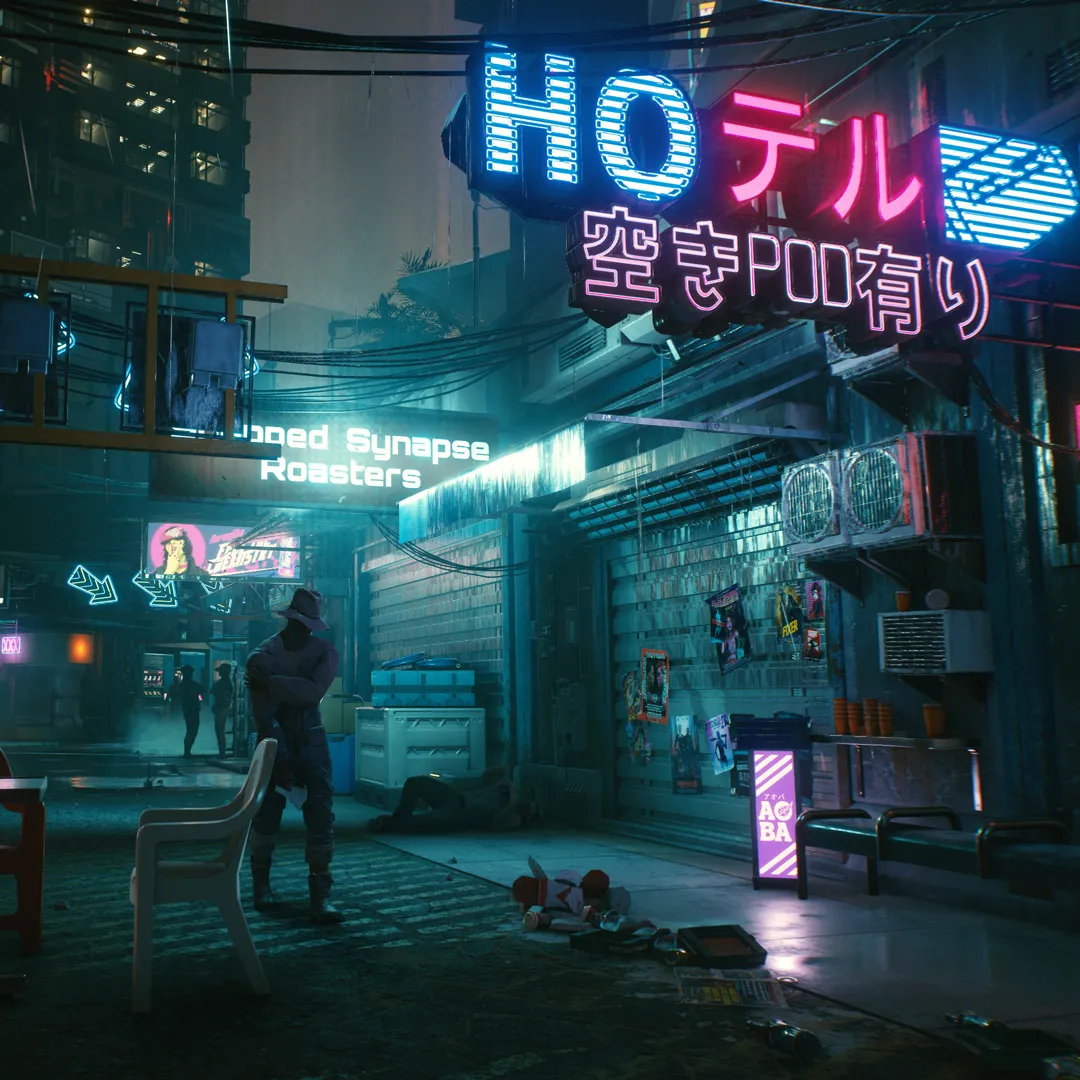Introduction:
The cyberpunk aesthetic is something that has always caught my eye due to it’s futuristic and dystopian elements. Specifically, the combination of advanced technology, towering skyscrapers, neon lights and a gritty urban landscape. It presented a world with a never-ending upheaval of new technology, but plagued with crime, government corruption and drug culture, which creates an interesting contrast between high-tech advancements and a decaying society [1]. A great representation I found on the web of Cyberpunk that encapsulates the futuristic dystopian feel is featured in the two images below.

[2] Cyberpunk Wallpaper.
Taken from https://www.musicgateway.com/blog/filmmaking/best-cyberpunk-movies

[3] Artwork created by XuTeng Pan of a Cyberpunk City.
Taken from https://www.artstation.com/artwork/0XQwnK
These images consistently follow the characteristics previously mentioned, especially by featuring a large array of neon lights and signs across a large city. Additionally, the flying vehicles weaving through the sky further contributes to the sense of futurism, while the towering skyscrapers above a person on a rooftop provides a dystopian atmosphere.
Brief History:
The origins of cyberpunk generally started around the 1980’s and stem from the New Wave movement during the 60s and 70s. During the New Wave movement, author Philip K. Dick wrote the novel Do Androids Dream of Electric Sheep? (1968) which presented the idea of a futuristic, dystopian and apocalyptic future filled with androids. This work was followed up by K. W. Jeter who wrote sequels to Dick’s novels called Blade Runner which eventually turned into the well known film Blade Runner (1982) [5].

[4] Blade Runner (1982) Film Poster.
Taken from https://www.imdb.com/title/tt0083658/mediaviewer/rm3676975360/?ref_=tt_ov_i
Although the novels where what provided the jumpstart for the Cyberpunk wave, the actual term was coined by Bruce Bethke in his short stories from 1980 but was quickly adopted and popularized by Gardner Dozois within his editorials [5]. From here on, the aesthetic has made it’s way into numerous works prior to the 2000s such as The Matrix (1999), Neon Genesis Evangelion (1995), and Akira (1988) to name a few [1].

[6] Tokyo-3 Featured in the Anime Series Neon Genesis Evangelion (1995).
Taken from https://evangelion.fandom.com/wiki/Tokyo-3
Evangelion doesn’t necessarily showcase the typical neon signs and flying vehicles commonly associated with cyberpunk, but it is still incorporated the theme of high-tech and low-life elements. The series delves into advanced technology, existential crises, and the impact of scientific advancements on society. The image below showcases one of the EVAs or biomechanical cyborgs the protagonist uses to combat mysterious beings called Angels which again follows the high tech characteristics seen within Cyberpunk.

[7] EVA-01 from the Anime Series Neon Genesis Evangelion (1995).
Taken from https://villainstournament.fandom.com/wiki/EVA-01
In More Recent Works:
Although outshined by more popular trends, the cyberpunk aesthetic still continues to make it’s way into many modern forms of entertainment. This includes the film Blade Runner 2049, video games like Cyberpunk 2077, animes like Cyberpunk: Edgerunners and even in the world of fashion with styles such as tech wear.

[8] A Scene from Blade Runner 2049.
Taken from https://www.okcmoa.com/visit/events/blade-runner-2049/
In my opinion, the most prominent one out of these is Cyberpunk 2077, which embodies the Cyberpunk genre (Hence the name). It is set in a futuristic dystopian city called Night City, which features a very detailed environment filled with neon-lit streets, giant skyscrapers, and a society heavily influenced by technological advancements through bodily cybernetic enhancements.

[9] The main setting in Cyberpunk 2077 Called Night City.
Taken from https://www.okcmoa.com/visit/events/blade-runner-2049/
[10] Adam Smasher, an Antagonist within Cyberpunk 2077 whose Body is 96% Cybernetic.
Taken from https://cyberpunk.fandom.com/wiki/Adam_Smasher
Cyberpunk 2077 not only showcases the visual elements commonly associated with the aesthetic but also delves into the moral and ethical dilemmas seen within early novels that jumpstarted the trend. Much of the plot deals with the consequences of having a society driven by corporate interests and emphasizing the high-tech, low-life theme.
Sources:
[1] https://aesthetics.fandom.com/wiki/Cyberpunk[2] https://www.musicgateway.com/blog/filmmaking/best-cyberpunk-movies
[3] https://www.artstation.com/artwork/0XQwnK
[4] https://www.imdb.com/title/tt0083658/mediaviewer/rm3676975360/?ref_=tt_ov_i
[5] https://en.wikipedia.org/wiki/Cyberpunk
[6] https://evangelion.fandom.com/wiki/Tokyo-3
[7] https://villainstournament.fandom.com/wiki/EVA-01
[8] https://www.okcmoa.com/visit/events/blade-runner-2049/
[9] https://cyberpunk.fandom.com/wiki/Night_City
[10] https://cyberpunk.fandom.com/wiki/Adam_Smasher



2 Comments. Leave new
One of my favorite aesthetics/genres by far is cyberpunk, and you nailed the aesthetic perfectly by not only describing the imagery, but by describing the history and context behind it, which gives cyberpunk the depth it deserves. Specifically Michael when you highlight the contrast in super advanced technology vs. the abysmal quality of life and corruption, you really capture what is so grotesquely intriguing about cyberpunk.
Something that I might suggest to add to the depth of the discussion, is the real world connections our society has to cyberpunk right now, and how we might be headed there in the future. Many aesthetics and themes can be very removed from reality and would never happen in real life, but I personally think with how our world operates (i.e. climate change, corporate capitalism, etc.), society by 2077 really could look similar to cyberpunk.
It’s fascinating how a city can look alluring from the neon lights and holograms plastered on skyscrapers or projected across the sky from a distance, but it’s more of a mask that hides the ugly truth and danger that presides from anyone who ventures or resides in. This is especially so considering there is always an emphasis in shows and media on the bird’s eye view of the city, where the dirty, claustrophobic, and crime-riddled street levels aren’t immediate to the viewers. One thing that would help with that point would be a street view or outside the perimeters of one of these dystopian cities, which is always a sharp contrast to the concept that most are used to. The brief scene of Earth in the movie Avatar would certainly fit the bill.